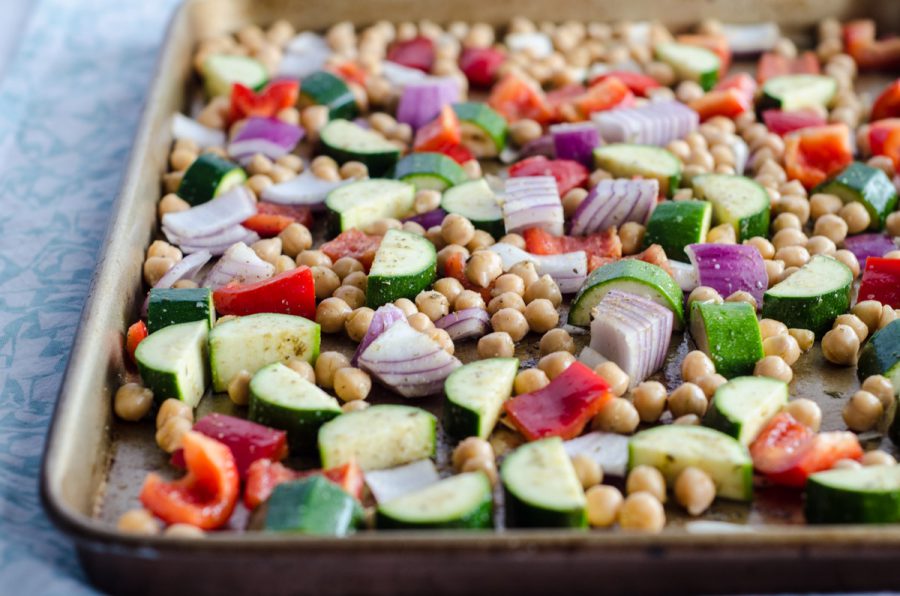Unleash the tantalizing flavors of Greece with our tantalizing Greek pizza sauce recipe! Embark on a culinary adventure as we explore its rich ingredients, delve into preparation methods, and discover the secrets to creating an unforgettable sauce that will elevate your pizza nights to new heights.
From its vibrant herbs to its velvety texture, Greek pizza sauce is a symphony of flavors that will ignite your taste buds and leave you craving more.
Ingredients
Greek pizza sauce is a flavorful and versatile condiment that can be used on a variety of dishes. It is made with a blend of tomatoes, herbs, and spices that gives it a unique flavor profile.
The essential ingredients for Greek pizza sauce are:
- Tomatoes: Tomatoes are the base of Greek pizza sauce. They provide the sauce with its sweetness and acidity.
- Olive oil: Olive oil is used to sauté the onions and garlic in the sauce. It adds a rich flavor to the sauce.
- Onion: Onion adds sweetness and depth of flavor to the sauce.
- Garlic: Garlic adds a savory flavor to the sauce.
- Oregano: Oregano is a classic herb used in Greek cuisine. It adds a warm and earthy flavor to the sauce.
- Basil: Basil is another classic herb used in Greek cuisine. It adds a fresh and herbaceous flavor to the sauce.
- Salt and pepper: Salt and pepper are used to season the sauce to taste.
Preparation Methods

Creating the Sauce Base
Begin by sautéing finely chopped onions in olive oil over medium heat until they become translucent. Next, add minced garlic and sauté for an additional minute, releasing its aromatic flavors. Stir in crushed tomatoes, ensuring they are evenly distributed.
Balancing Acidity and Sweetness
To balance the acidity of the tomatoes, add a touch of sugar or honey. This helps neutralize the sharpness while enhancing the overall flavor profile. Season with salt and black pepper to taste, adjusting the amounts based on personal preference.
Achieving Desired Consistency
Simmer the sauce over low heat for approximately 30 minutes, stirring occasionally to prevent burning. As it cooks, the sauce will gradually thicken. If a thicker consistency is desired, continue simmering until it reaches the preferred texture. Alternatively, for a thinner sauce, add a small amount of water or vegetable broth while stirring.
Enhancing Flavor with Herbs
Incorporate dried oregano and basil into the sauce, allowing them to infuse their aromatic flavors. You can also add a bay leaf for additional depth and complexity. Simmer for a further 10 minutes to allow the herbs to fully blend with the sauce.
Variations

Greek pizza sauce offers a range of customization options to cater to diverse preferences and dietary restrictions.
Here are some popular variations to explore:
Vegetarian Options
- Substitute chicken broth with vegetable broth for a vegetarian-friendly base.
- Add roasted vegetables, such as zucchini, bell peppers, or mushrooms, for extra flavor and texture.
- Use plant-based yogurt or sour cream in place of traditional dairy products.
Variations with Different Herbs and Spices, Greek pizza sauce recipe
- Enhance the flavor profile with a blend of dried oregano, basil, and thyme.
- Add a touch of heat with red pepper flakes or paprika.
- Experiment with fresh herbs like parsley, cilantro, or dill for a refreshing twist.
Creamy or Chunky Textures
- For a creamier sauce, blend it until smooth.
- To create a chunky texture, leave some diced tomatoes unblended.
- Add a dollop of whipped cream or sour cream for extra richness.
Pairing Suggestions
Greek pizza sauce’s vibrant flavors pair exceptionally well with a variety of pizza crusts and toppings, enhancing the overall taste experience.
Its tangy, herbaceous profile complements crispy, thin crusts that provide a sturdy base without overpowering the sauce’s delicate notes. The sauce’s acidity balances the richness of a thick, chewy crust, creating a harmonious blend of flavors.
Crust Recommendations
- Thin and crispy crust: Enhances the sauce’s tangy brightness.
- Chewy and thick crust: Balances the acidity with its richness.
Topping Harmony
Greek pizza sauce harmonizes with an array of toppings that complement its Mediterranean essence.
The tangy and flavorful Greek pizza sauce is a staple in many households. But if you’re looking for a unique twist, why not try making your own plum sauce? With its sweet and slightly tart flavor, plum sauce adds a delicious depth to any pizza.
And with the help of our plum sauce recipe canning guide, you can easily preserve your homemade sauce for future use. Once you’ve canned your plum sauce, you can enjoy it on pizzas, salads, or as a dipping sauce for appetizers.
- Feta cheese: Its salty, tangy flavor mirrors the sauce’s tang, creating a cohesive taste.
- Roasted red peppers: Their smoky sweetness balances the sauce’s acidity.
- Black olives: Their briny, earthy notes add depth and complexity to the overall flavor.
- Spinach: Its freshness provides a vibrant contrast to the sauce’s richness.
- Red onions: Their sharp, pungent flavor adds a subtle kick.
Nutritional Information

Greek pizza sauce is not only flavorful but also packed with nutritional value. It’s a rich source of essential vitamins, minerals, and antioxidants that contribute to overall health and well-being.
Let’s delve into the specific nutritional components of Greek pizza sauce:
Calories and Macronutrients
- Greek pizza sauce is relatively low in calories, with approximately 100 calories per 1/2 cup serving.
- It contains a moderate amount of carbohydrates, primarily from tomatoes and onions, which provide energy.
- The sauce is low in fat, with most of the fat coming from healthy sources like olive oil.
- It’s also a good source of protein, essential for building and repairing tissues.
Vitamins and Minerals
- Greek pizza sauce is an excellent source of vitamin C, an antioxidant that supports immune function and collagen production.
- It’s also rich in potassium, which helps regulate blood pressure and electrolyte balance.
- The sauce contains significant amounts of iron, essential for red blood cell production and oxygen transport.
Antioxidants
- Greek pizza sauce is packed with antioxidants, including lycopene, beta-carotene, and flavonoids.
- These antioxidants help protect cells from damage caused by free radicals, reducing the risk of chronic diseases.
Presentation

The presentation of Greek pizza sauce is crucial to making it visually appealing and appetizing. Here are some tips for presenting the sauce in an eye-catching way:
Garnishing: Fresh herbs like oregano, basil, or thyme can add a vibrant touch of color and flavor to the sauce. A sprinkle of grated Parmesan cheese or crumbled feta cheese can also enhance its appearance and taste.
Serving Techniques
Serving the sauce in a small ramekin or bowl allows guests to dip their pizza slices or use it as a spread. Drizzling the sauce over the pizza before baking creates a tantalizing aroma and a golden-brown crust. You can also use the sauce as a dipping sauce for breadsticks or other appetizers.
Storage and Shelf Life

To preserve the freshness of Greek pizza sauce, proper storage is crucial. Keep the sauce refrigerated in an airtight container to prevent oxidation and contamination. This will help maintain its flavor and prevent spoilage.
The recommended shelf life of homemade Greek pizza sauce is approximately 3-5 days when refrigerated. However, factors such as the freshness of the ingredients used and the cleanliness of the storage container can influence its longevity.
Freezing for Extended Storage
For longer storage, you can freeze the Greek pizza sauce in freezer-safe containers. When frozen, it can last for up to 3 months. To use the frozen sauce, thaw it overnight in the refrigerator or at room temperature for several hours before using it.
Tips and Tricks

Elevate your Greek pizza sauce with these culinary secrets and unlock a world of flavors.
Harness the power of herbs like oregano, thyme, and rosemary to infuse your sauce with an aromatic depth. Experiment with different types of tomatoes to discover subtle variations in sweetness and acidity. Fresh, canned, or crushed tomatoes all offer unique contributions to the sauce’s texture and flavor profile.
Simmering Secrets
- Simmer the sauce on low heat for an extended period to concentrate its flavors and allow the herbs to fully infuse.
- Stir occasionally to prevent scorching and ensure even cooking throughout.
Sauce Versatility
Greek pizza sauce is not confined to pizza alone. Unleash its versatility by incorporating it into other culinary creations.
- Use it as a flavorful marinade for chicken, fish, or vegetables before grilling or roasting.
- Spread it over grilled eggplant slices and top with feta cheese for a tantalizing appetizer.
Historical and Cultural Significance

Greek pizza sauce, with its tantalizing blend of herbs and spices, holds a significant place in the culinary tapestry of Greece. Its origins can be traced back to the ancient Greek tradition of preparing savory sauces to enhance the flavors of their dishes.
Over the centuries, Greek pizza sauce evolved alongside the country’s rich culinary heritage, becoming an integral part of traditional Greek cuisine. It is widely used as a flavorful base for pizzas, adding a uniquely Greek touch to this beloved dish.
Cultural Implications
Beyond its culinary significance, Greek pizza sauce holds cultural implications as well. Its widespread use in family gatherings and celebrations reflects its role in fostering a sense of community and shared experiences. The sauce’s distinctive taste and aroma evoke nostalgic memories and evoke a sense of belonging.
Comparisons with Other Sauces: Greek Pizza Sauce Recipe

Greek pizza sauce stands out from other popular pizza sauces with its unique blend of flavors and ingredients. Here’s a comparison to three other widely used sauces:
Marinara Sauce
- Similarities: Both are tomato-based sauces with a tangy flavor profile.
- Differences: Greek pizza sauce typically includes a blend of spices, herbs, and sometimes even yogurt, while marinara sauce is usually made with just tomatoes, garlic, and oregano.
Alfredo Sauce
- Similarities: Both sauces are creamy and rich.
- Differences: Alfredo sauce is made with a base of butter, cream, and Parmesan cheese, while Greek pizza sauce uses a blend of yogurt, feta cheese, and spices.
Pesto Sauce
- Similarities: Both sauces have a vibrant green color.
- Differences: Pesto sauce is made with a blend of basil, pine nuts, Parmesan cheese, and olive oil, while Greek pizza sauce typically includes a mix of yogurt, feta cheese, dill, and oregano.
Final Review

Whether you’re a seasoned pizza aficionado or a novice in the kitchen, this Greek pizza sauce recipe will empower you to craft a culinary masterpiece that will impress your friends and family. So gather your ingredients, fire up the stove, and let’s embark on a delicious journey together!
Q&A
Can I use this sauce on other dishes besides pizza?
Absolutely! Greek pizza sauce is a versatile condiment that can add a burst of flavor to various dishes. Try it as a marinade for grilled meats, as a dip for appetizers, or even as a spread for sandwiches and wraps.
How long can I store the sauce?
Properly stored in an airtight container in the refrigerator, your Greek pizza sauce will stay fresh for up to 5 days. You can also freeze it for longer storage, where it will maintain its quality for up to 2 months.
